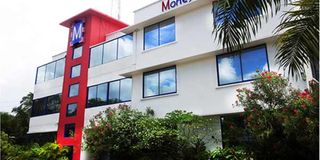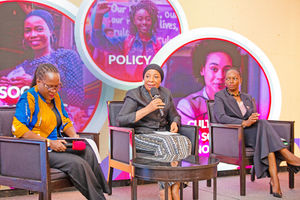The 11 years of mixed fortune for Tanzania's Bank M

What you need to know:
Bank M’s strategic focus on the corporate and investment banking had assured it of profitability and asset growth for the last decade during which it cut the niche of a savvy financial institution.
Dar es Salaam. Bank M which was early Thursday, August 2, 2018, put on statutory management by the Bank of Tanzania has had mostly a stellar performance in the 11 years of its operations, raising its asset portfolio to Tsh1.05 trillion under a decade.
Bank M was counted among Tanzania’s top 10 commercial banks with a promising future, even becoming the first local bank to venture into the region, with its shareholders acquiring 51 per cent of stake in Kenya’s Oriental Commercial Bank Limited in 2016.
But that is until today when BoT issued a surprise public notice appointing a statutory manager to take charge of its day to day management, in an effort to protect depositors.
BoT’s intervention follows signs the bank was running short of liquidity to meet its obligations, including paying mature securities.
For a bank that raised its assets base from Tsh30 billion in the first year of its operation in 2008 to Tsh1.05 trillion in 2016, BoT’s intervention is likely to take many by surprise.
2016 was the same year that Bank M recorded Tsh16.5 in profit. In the last two years, however, the profit has dropped fast but it is the failure to service its depositors that has now raised alarm.
Bank M’s strategic focus on the corporate and investment banking had assured it of profitability and asset growth for the last decade during which it cut the niche of a savvy financial institution.
How it started
In the first two years in 2007/08, it registered losses before enjoying profitability in the following consecutive nine years, according to the bank’s financial statements.
The bank was given a licence to undertake banking business in February 2007 but operations started in June of the same year.
At the end of the year, the lender had assets worth Sh31.2 billion but recorded a loss of Sh1.56 billion, probably because of the cost associated with setting up the business.
In the second year of operations (2008), the assets more than doubled to Sh67.3 billion and the loss reduced to Sh1.3 billion before the bank’s maiden profit of Sh522 million in 2009. At the same time, assets reached Sh106.5 billion.
By the end of 2016, the bank’s assets reached Sh1.05 trillion while the annual profits reached Sh16.5 billion following its consecutive profitability.
But in 2017, Bank M recorded a profit of Sh12.1 billion.
Expansion strategy
The five-year composite business plan of Bank M envisaged its growth organically as well through acquisitions within Tanzania and in the promising neighbouring countries like Uganda, Zambia, Rwanda and Kenya. Its vision was to become a leading regional bank in Sub-Saharan Africa.
In 2016, M Holdings which is owned by various shareholders of Bank M Tanzania received approval from Central Bank of Kenya (CBK) to acquire 51 per cent of stake at Kenya’s Oriental Commercial Bank Limited.
That made it the first Tanzanian bank to enter the Kenyan market. The move which paved way for Bank M to open business in Kenya saw Oriental Commercial Bank changing its name to M Oriental Commercial Bank Limited.
Bank M entry into the Kenyan market was also described by the CBK as a step towards strengthening of the ongoing East African Community (EAC) integration.
Recently, Bank M Tanzania partnered with the International Finance Corporation (IFC), Washington - the private sector arm of the World Bank; Housing Development Finance Corporation Limited (HDFC) - the largest housing finance company in Asia; the Karimjee family and Sanjay Suchak in establishing the mortgage finance company.
Called 1st Housing Finance (Tanzania) Limited, the firm is the first dedicated Housing Finance Company in Tanzania with a focus on providing long term housing solutions to the citizens of Tanzania.
Bank M controls 40 per cent of stake in the housing finance firm which paid-up capital stood at Sh21.80 billion last year. IFC, Washington has 15 per cent; HDFC, India own 15 per cent while Karimjee family and Sanjay Suchak own 15 per cent each.




